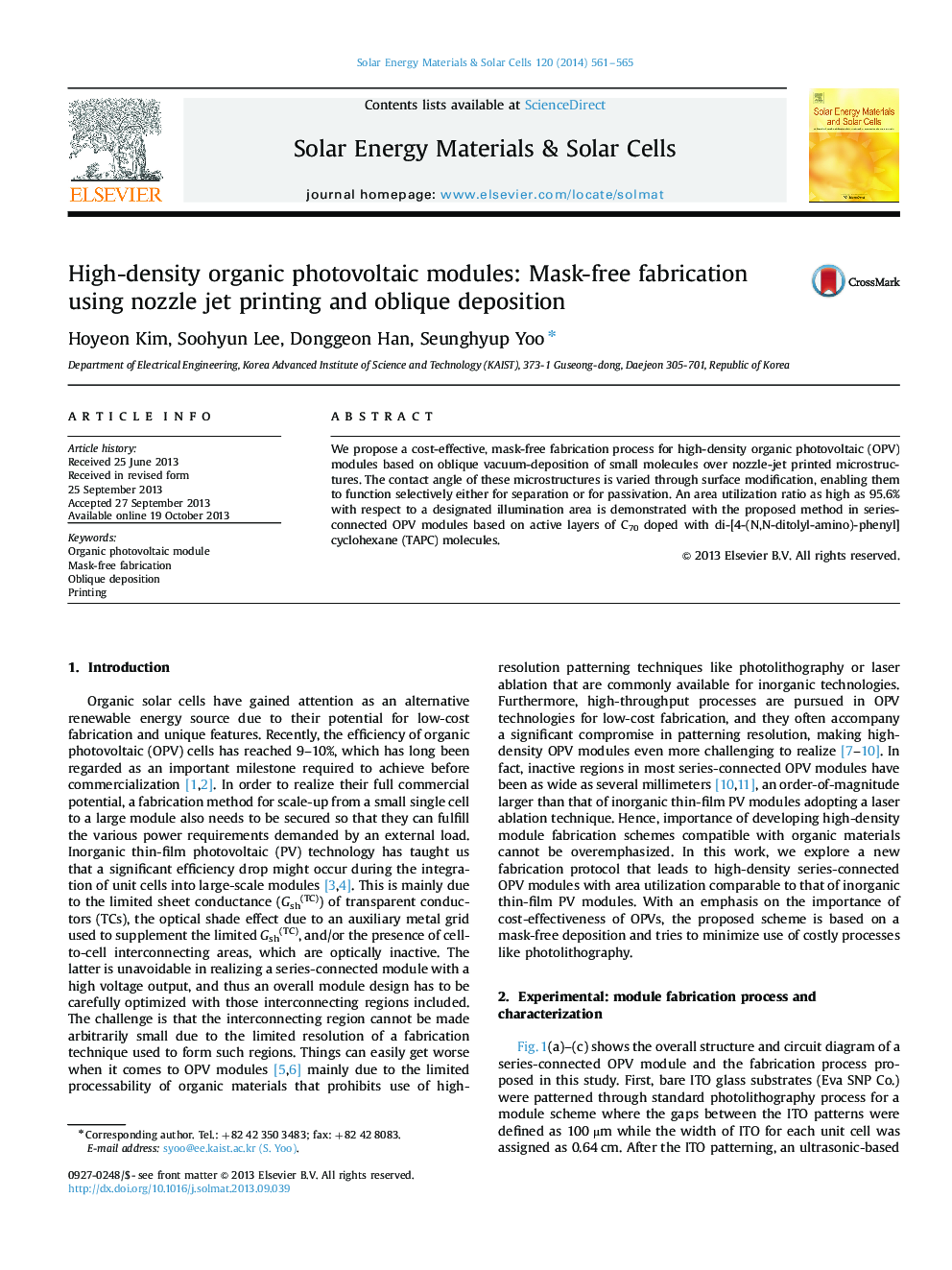| Article ID | Journal | Published Year | Pages | File Type |
|---|---|---|---|---|
| 78167 | Solar Energy Materials and Solar Cells | 2014 | 5 Pages |
•The width of inactive region per cell in an OPV module was found to be 415 μm.•Oblique deposition of small molecules over printed linear structures was performed.•Area utilization as high as 95.6% is realized with respect to a designated illumination area.•Monolithically integrated OPV modules based on C70 doped with TAPC molecules was performed.
We propose a cost-effective, mask-free fabrication process for high-density organic photovoltaic (OPV) modules based on oblique vacuum-deposition of small molecules over nozzle-jet printed microstructures. The contact angle of these microstructures is varied through surface modification, enabling them to function selectively either for separation or for passivation. An area utilization ratio as high as 95.6% with respect to a designated illumination area is demonstrated with the proposed method in series-connected OPV modules based on active layers of C70 doped with di-[4-(N,N-ditolyl-amino)-phenyl] cyclohexane (TAPC) molecules.
Graphical abstractFigure optionsDownload full-size imageDownload as PowerPoint slide
